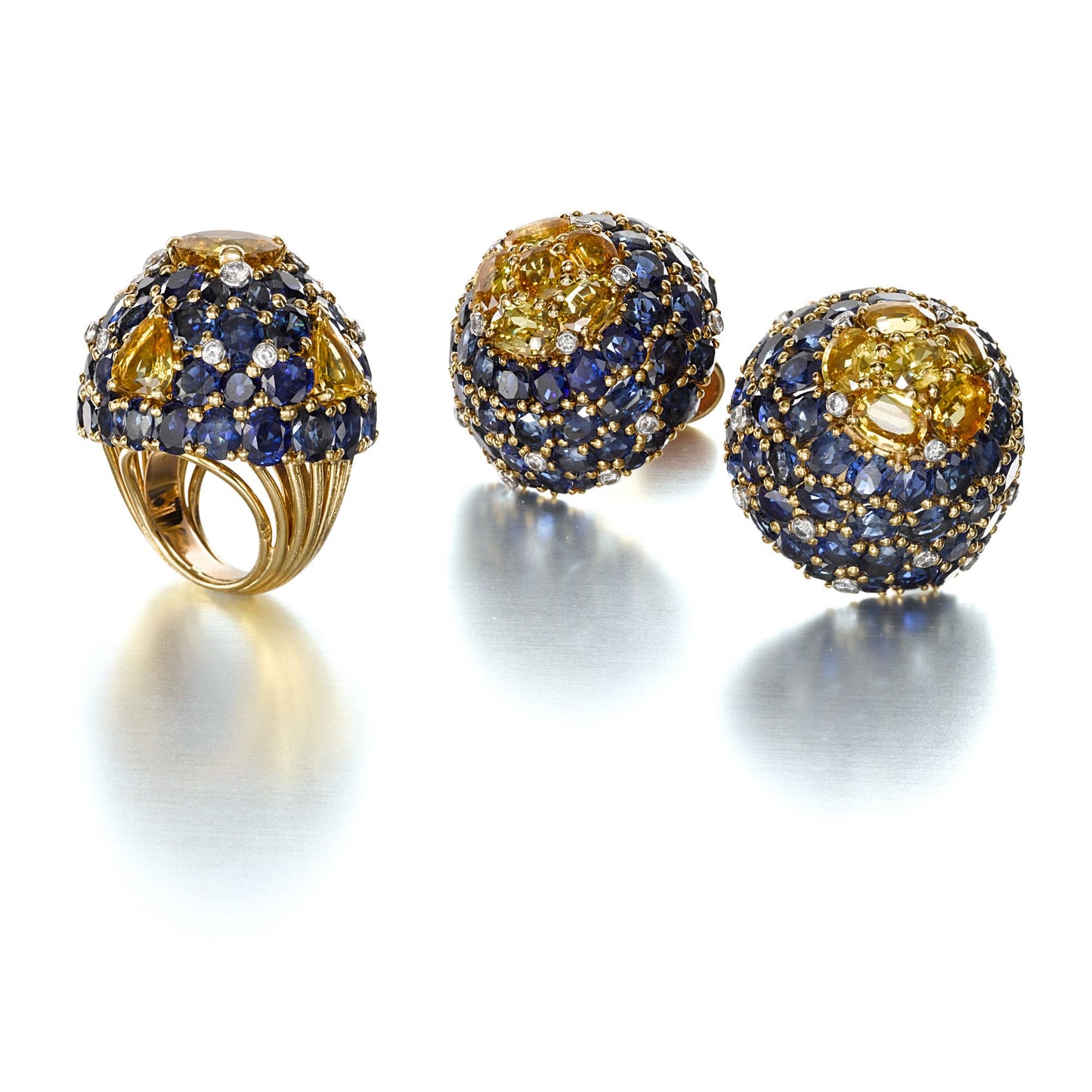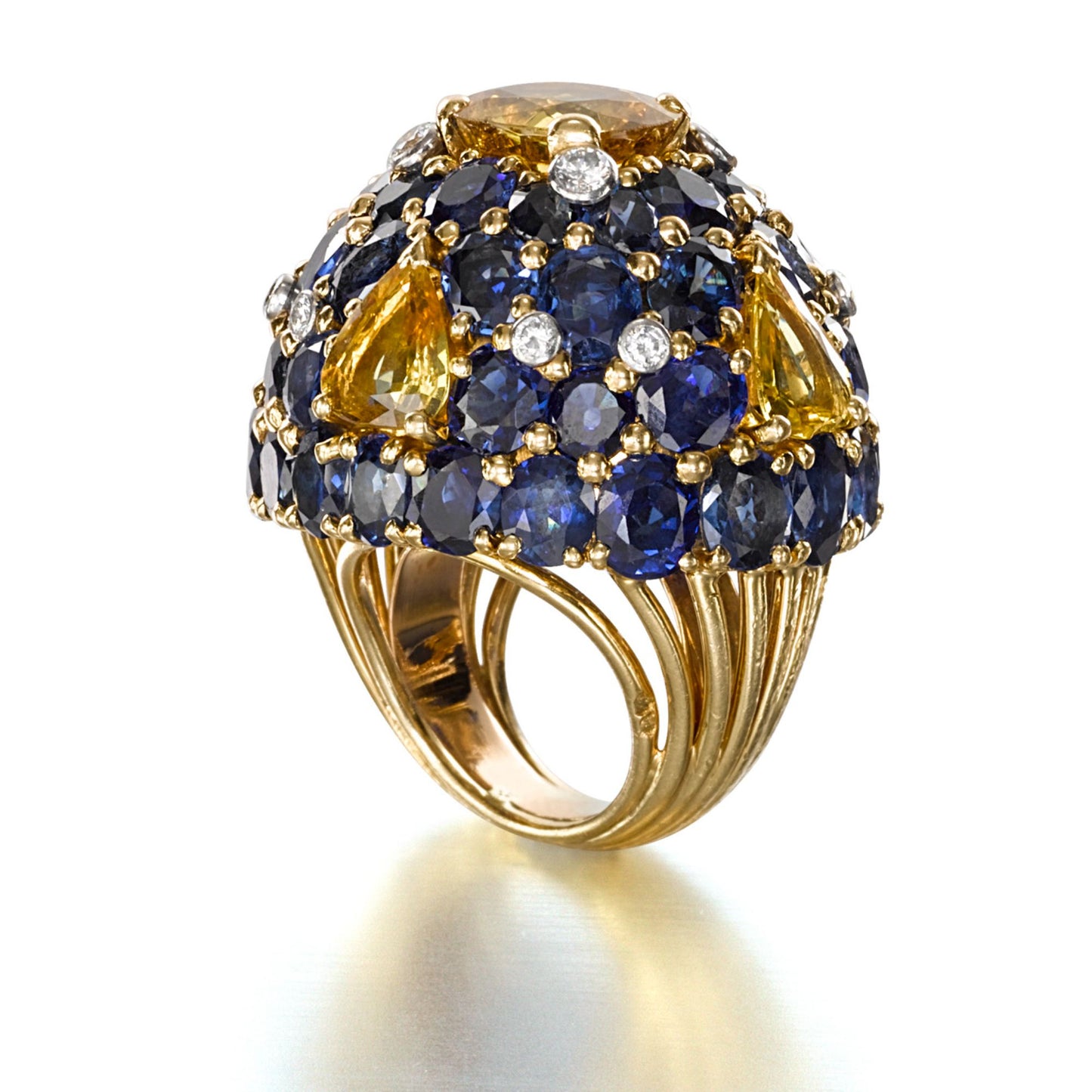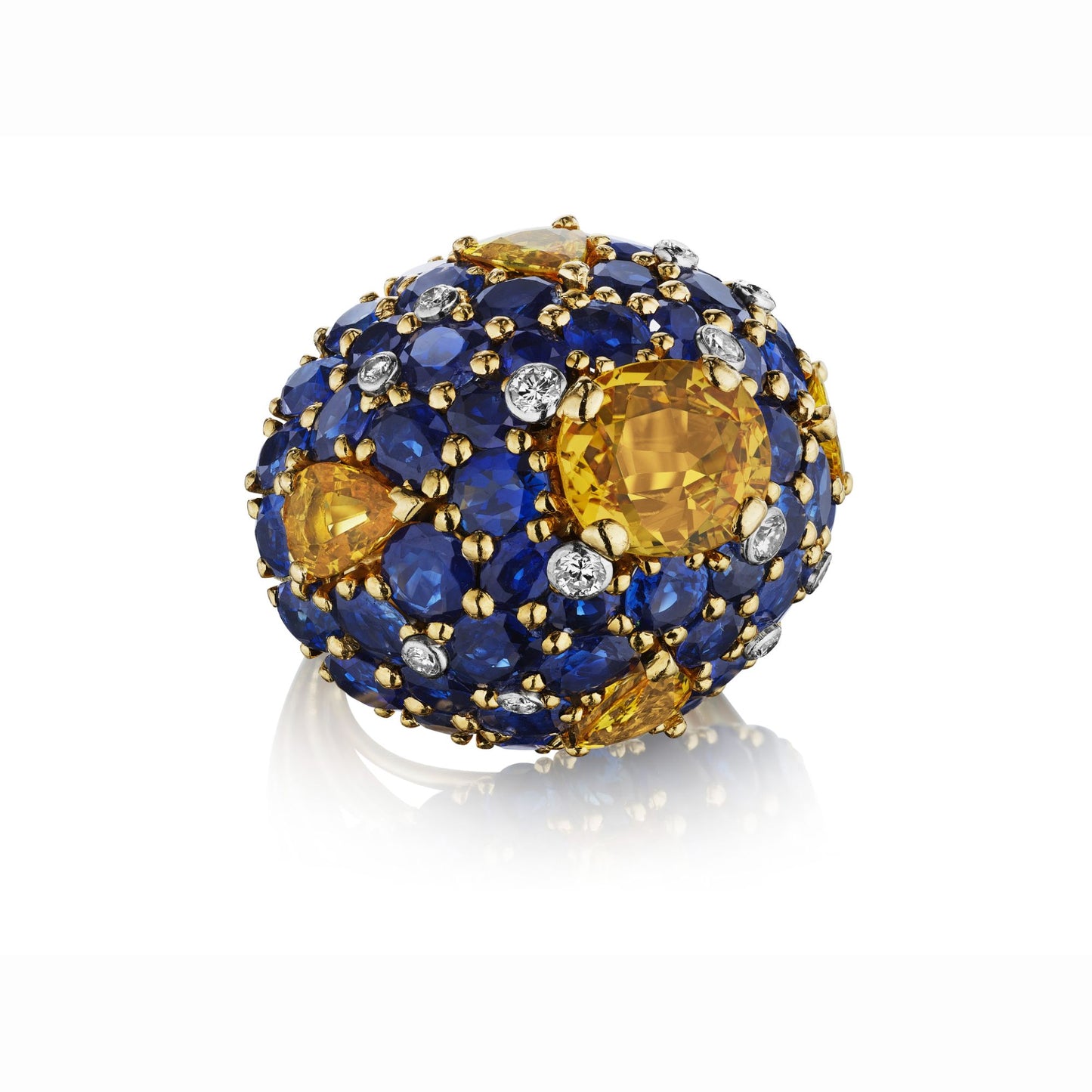BICOLORED SAPPHIRE AND DIAMOND SUITE BY MARCHAK, PARIS, CIRCA 1960
BICOLORED SAPPHIRE AND DIAMOND SUITE BY MARCHAK, PARIS, CIRCA 1960
A pavé-set, oval- and circular-cut sapphire dome ring punctuated with contrasting yellow sapphires on the sides and top, accented with circular-cut diamonds; ear clips, en suite; mounted in 18-karat yellow gold and platinum, with French assay marks
- 44 circular-cut diamonds
- 164 oval- and circular-cut sapphires
- 17 oval-, pear-, and circular-cut yellow sapphires
- Each piece signed Marchak
- Ring 1 1⁄2 x 1 1⁄4 x 1 1⁄8 inches; ear clips 7⁄8 x 1 1⁄4 x 1 1⁄4 inches
Additional cataloguing
Literature
cf. de Cerval, Marguerite. Marchak. Paris: Editions du Regard, 2006, pp. 34, 112.
Biography
In 1878 Joseph Marchak opened his jewelry and goldsmith workshop in Kiev, Russia. Within ten years he was an internationally renowned jeweler, second only to Fabergé. Joseph died in 1918, the year after the Russian Revolution, and his son Alexander relocated to Paris and reopened Joseph Marchak on rue de la Paix in 1920. Five years later, he exhibited jewelry at the 1925 Paris Exposition Internationale des Arts Décoratifs et Industriels Modernes, with Robert Linzeler, and won the Grand Prix. In 1956, Jacques Verger took over the company. It was sold to Daum in 1988.
Significance
After World War II, Alexander Marchak hired Alexander Diringer, an innovative designer trained at Cartier and Sterlé. Making ingenious use of the limited materials available after the war, Diringer developed a bold style. Jacques Verger was also brought on as a salesman and soon bought the company. Like their predecessors, Verger and Diringer offered exclusive jewels that by the 1950s were strong in conception, featuring brightly colored contrasting gemstones and a slightly chaotic quality.
This ring and earring suite is a notable example. Each piece is designed in a dome-shaped mounting and set with yellow and blue sapphires accented with diamonds. A yellow sapphire crowns the ring with four wedge-shaped yellow sapphires set into the sides. A row of blue sapphires demarcates the dome from the shank, which is made of smooth threaded bands of gold. The ear clips are designed with a central cluster of yellow sapphires surrounded by blue sapphires; diamonds are sprinkled among the sapphires. Subtle detailing, a mark of a superb jeweler, is seen in the varied setting of the stones; the sapphires are prong-set while the diamonds are collet-set.
Dinners, social gatherings which had been de rigueur in the 1940s, were replaced in the 1950s by cocktail parties, a change that precipitated new designs in fashion as well as in jewelry. Large, bold rings were created that could be prominently displayed on hands holding beverages. This ring and earring suite is perfect for such an occasion.









